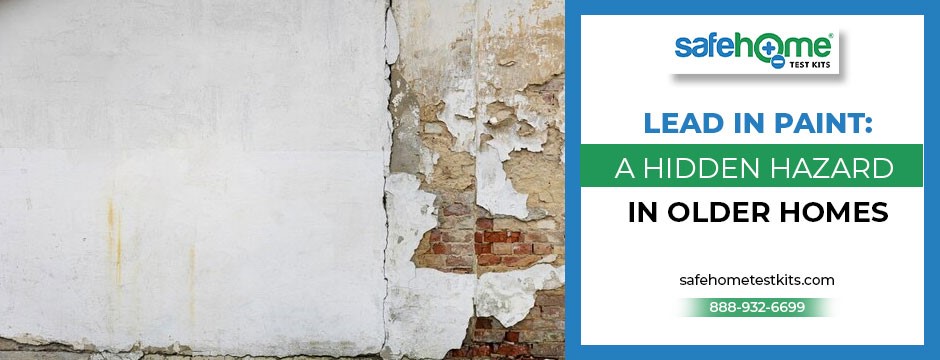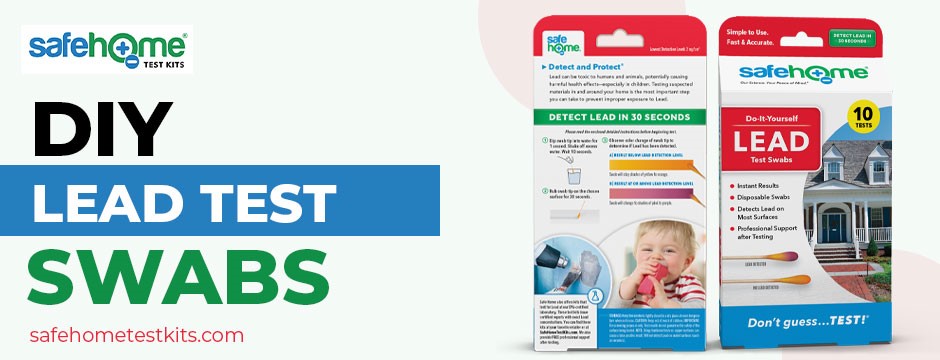Lead in Paint: A Hidden Hazard in Older Homes

When it comes to the safety and well-being of your family, your home should be a haven of security. However, many older homes may hide a silent danger within their walls – lead-based paint. While lead-based paint was banned in the United States in 1978, it still exists in many homes built before this date, posing a significant risk, especially to young children. In this comprehensive blog, we will explore the hidden hazard of lead in paint in older homes, its health implications, and the steps you can take to address this issue and create a safer living environment for your loved ones.
Understanding the Legacy of Lead-Based Paint
Lead-based paint was commonly used in homes built before 1978. Its durability and colorfastness made it a popular choice. However, as we’ve come to understand, the lead in paint can have detrimental health effects, especially when it deteriorates and turns into dust or chips that can be ingested or inhaled. Children, in particular, are vulnerable to lead exposure, as their growing bodies can absorb lead more readily.
The Health Implications of Lead Exposure
Lead is a toxic metal that can affect various systems in the body. Even low levels of lead exposure can lead to serious health problems, including:
- Developmental Delays: Children exposed to lead may experience developmental delays, which can result in learning disabilities and behavior problems.
- Cognitive Impairment: Lead exposure has been linked to decreased IQ and cognitive abilities, affecting a child’s ability to excel in school and later in life.
- Behavioral Issues: Increased aggression, hyperactivity, and attention deficits are associated with lead exposure in children.
- Anemia: Lead exposure can lead to a decrease in hemoglobin levels, resulting in anemia.
- Nervous System Damage: Lead exposure can cause damage to the nervous system, leading to symptoms like headaches, irritability, and even seizures in severe cases.
- Kidney and Liver Damage: Lead can accumulate in the kidneys and liver, potentially causing long-term damage.
- Fertility Issues: In adults, lead exposure has been linked to fertility problems, including reduced sperm count.
Identifying Lead-Based Paint in Older Homes
The first step in addressing this hidden hazard is identifying whether your home contains lead-based paint. Here are some tips on how to identify it:
- Age of the House: If your house was built before 1978, there is a higher likelihood of lead-based paint.
- Visual Inspection: Carefully examine your home’s interior and exterior for chipping, peeling, or deteriorating paint. If the paint is in poor condition, it could be a source of lead exposure.
- Lead Testing Kits: You can purchase lead testing kits at most hardware stores to test paint and other surfaces for lead. These kits are easy to use and provide a quick answer about the presence of lead.
- Consult a Professional: If you need clarification or concern about lead-based paint, consider consulting a professional lead inspector or contractor who can perform a comprehensive assessment.

Safeguarding Your Family from Lead Exposure
Once you’ve confirmed the presence of lead-based paint in your home, it’s crucial to take immediate action to minimize the risks. Here are some steps you can take:
- Renovation and Remodeling: If you plan to renovate or remodel your home, hire a certified contractor with expertise in lead-safe practices. These professionals can safely remove lead-based paint or encapsulate it to prevent exposure.
- Regular Cleaning: Dust and chips from lead-based paint can accumulate on surfaces, so it’s essential to maintain a clean home environment. Use a damp cloth or mop to wipe down surfaces and vacuum with a HEPA filter-equipped vacuum cleaner regularly.
- Hand Washing: Encourage frequent hand washing, especially for young children, to reduce the risk of ingesting lead dust.
- Healthy Diet: A diet rich in iron, calcium, and vitamin C can help reduce lead absorption.
- Address Soil Contamination: In some cases, lead from exterior paint may have contaminated the soil around your home. Consider soil testing and remediation if necessary.
- Regular Health Check-ups: Schedule regular check-ups for lead testing, especially for children, to catch and address any exposure early.
Legal Requirements and Disclosures
If you’re buying or selling a home, you should know the legal requirements regarding lead-based paint disclosures. Federal law mandates that sellers and landlords provide potential buyers or renters with information about known lead-based paint hazards in the property. This includes providing a lead disclosure pamphlet and specific warning language in contracts.
Detecting Lead at Home with Safe Home's DIY Lead Test Swabs
A Growing Concern: Lead Exposure
Lead exposure is a growing concern, affecting millions of people who come into contact with everyday items contaminated by this toxic metal. The risks are particularly high for young children, the elderly, and pets. The CDC reports that over 10 million U.S. households have children exposed to high lead levels, emphasizing the need for effective lead detection solutions.

Key Features of Safe Home's DIY Lead Test Swabs
- Do-It-Yourself Convenience: Each package includes 10 disposable test swabs, providing a convenient and cost-effective way to check your home for potential lead hazards thoroughly. With these test swabs, you can take control of your family’s safety.
- Versatile Testing: Safe Home’s DIY Lead Test Swabs are incredibly versatile. You can use them on various surfaces, from painted walls and wood to plastic, metal, children’s toys, and furniture. This versatility ensures that you can comprehensively assess potential lead sources in your home.
- Rapid Results: One of the key advantages of Safe Home’s DIY Lead Test Swabs is the speed of obtaining results. In just 30 seconds, you’ll have visible test results that indicate whether lead is present below the detection level or at/above it. This eliminates the need to wait for lab results, providing you with immediate peace of mind and enabling you to take swift corrective actions if necessary.
Creating a Healthier Living Environment
By using Safe Home’s DIY Lead Test Swabs, you’re taking a proactive step toward ensuring your home is lead-safe. These swabs empower you to detect lead contamination quickly, allowing you to take the necessary actions promptly. When it comes to the well-being and safety of your loved ones, prioritizing a healthier living environment is paramount.
Order Safe Home's Lead Test Swabs Today
Be sure to address the hidden hazard of lead contamination in your home. Order Safe Home‘s DIY Lead Test Swabs today and experience the confidence of a lead-free home. With these easy-to-use test swabs, you can protect your family and create a safer, healthier living space. Invest in your family’s well-being and take the first step towards a lead-safe home.
Conclusion: A Safer Home for Your Family
Lead-based paint may be a hidden hazard in older homes, but with awareness and proactive steps, you can protect your family from its risks. Regular maintenance, proper cleaning, and, when needed, professional remediation are key to ensuring your home is a safe and healthy environment for everyone.
The health of your loved ones is a top priority, and by addressing lead in paint, you’re taking a significant step toward creating a secure and healthy living space. Remember, there is always time to act and make your home lead-safe, ensuring the well-being and bright future of your family.


